
Tunisia, officially the Republic of Tunisia, is the northernmost country in Africa. It is a part of the Maghreb region of North Africa, bordered by Algeria to the west and southwest, Libya to the southeast, and the Mediterranean Sea to the north and east. Tunisia also shares maritime borders with Italy through the islands of Sicily and Sardinia to the north and Malta to the east. It features the archaeological sites of Carthage dating back to the 9th century BC, as well as the Great Mosque of Kairouan. Known for its ancient architecture, souks, and blue coasts, it covers 163,610 km2 (63,170 sq mi), and has a population of 12.1 million. It contains the eastern end of the Atlas Mountains and the northern reaches of the Sahara desert; much of its remaining territory is arable land. Its 1,300 km (810 mi) of coastline includes the African conjunction of the western and eastern parts of the Mediterranean Basin. Tunisia is home to Africa's northernmost point, Cape Angela. Located on the northeastern coast, Tunis is the capital and largest city of the country, which is itself named after Tunis. The official language of Tunisia is Modern Standard Arabic. The vast majority of Tunisia's population is Arab and Muslim. Vernacular Tunisian Arabic is the most spoken, and French also serves as an administrative and educational language in some contexts, but it has no official status.

Tunis is the capital and largest city of Tunisia. The greater metropolitan area of Tunis, often referred to as "Grand Tunis", has about 2,700,000 inhabitants. As of 2020, it is the third-largest city in the Maghreb region and the eleventh-largest in the Arab world.

Tunis–Carthage International Airport, is the international airport of Tunis, the capital of Tunisia. It serves as the home base for Tunisair, Tunisair Express, Nouvelair Tunisia, and Tunisavia. The airport is named for the historic city of Carthage, located just east of the airport.

The flag of Tunisia is a rectangular panel of red color with an aspect ratio of 2:3. In the center of the cloth in a white circle is placed a red crescent, surrounding a red five-pointed star on three sides. The Tunisian Bey Hussein II decided to create a flag for Tunisia, close in appearance to the modern one, after the Battle of Navarino on 20 October 1827; in 1831 he was officially approved. In that form, the flag existed during the French protectorate, and on 1 June 1959, it was proclaimed the state flag of the Republic of Tunisia. On 30 June 1999, the proportions and design of the flag were clarified by a special law. The general appearance of the flag remained virtually unchanged.

Hammadi Agrebi Stadium, opened as 7 November Stadium, is a multi-purpose stadium located in the sports city of Radès, located in Radès, in the southern suburb of the city Tunis. The stadium was established in 2001 to host the 2001 Mediterranean Games.

This is a survey of the postage stamps and postal history of Chad.
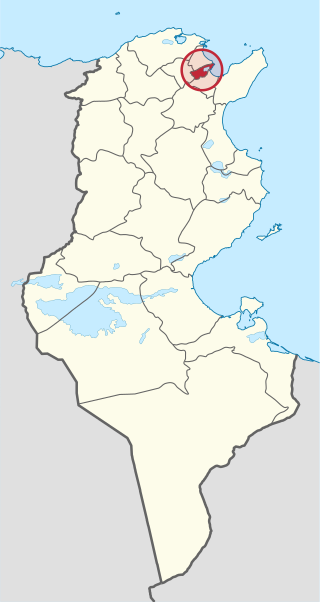
Tunis Governorate is the smallest and most populated of the twenty-four governorates (provinces) of Tunisia. It covers an urban and suburban area on the Gulf of Tunis on the north-east coast covering 346 square kilometres (134 sq mi) and has a population of 1,056,247 with some agriculture and amenity land including parts of national parks. Its capital is that of the country, Tunis.

Tourism in Tunisia is an industry that generated around 9.4 million arrivals per year in 2016-2020, making it one of the most visited countries in Africa. Tunisia has been an attractive destination for tourists since the beginning of the 1960s.

The cinema of Tunisia began in 1896, when the Lumière brothers began showing animated films in the streets of Tunis.
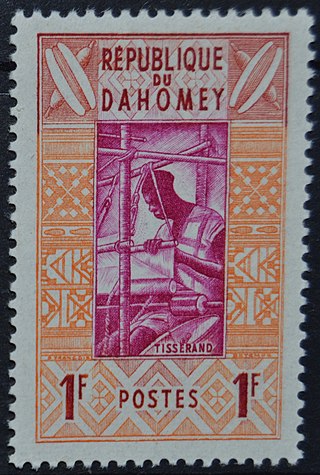
This is a survey of the postage stamps and postal history of Benin, formerly Dahomey.
This is a survey of the postage stamps and postal history of Syria.
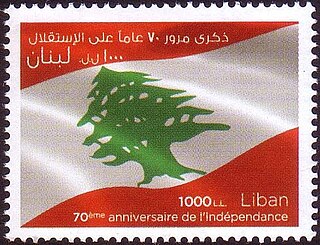
This is a survey of the postage stamps and postal history of Lebanon, formerly known as Liban.

This is a survey of the postage stamps and postal history of Libya. Libya is a country located in North Africa. Bordering the Mediterranean Sea to the north, Libya lies between Egypt to the east, Sudan to the southeast, Chad and Niger to the south, and Algeria and Tunisia to the west.

This is a survey of the postage stamps and postal history of Fezzan and Ghadames, both now part of Libya.
This is a survey of the postage stamps and postal history of Senegal.
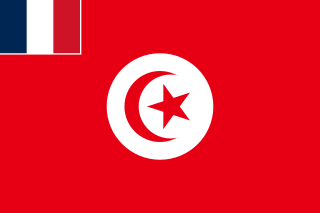
The French protectorate of Tunisia, officially the Regency of Tunis and commonly referred to as simply French Tunisia, was established in 1881, during the French colonial empire era, and lasted until Tunisian independence in 1956.
This is a survey of the postage stamps and postal history of Eritrea.

This is a survey of the postage stamps and postal history of Niger, a former French colony that obtained independence in 1960.

This is a survey of the postage stamps and postal history of Uganda.
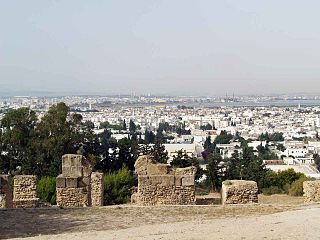
Carthage is a commune in Tunis Governorate, Tunisia. It is named for, and includes in its area, the archaeological site of Carthage.


















